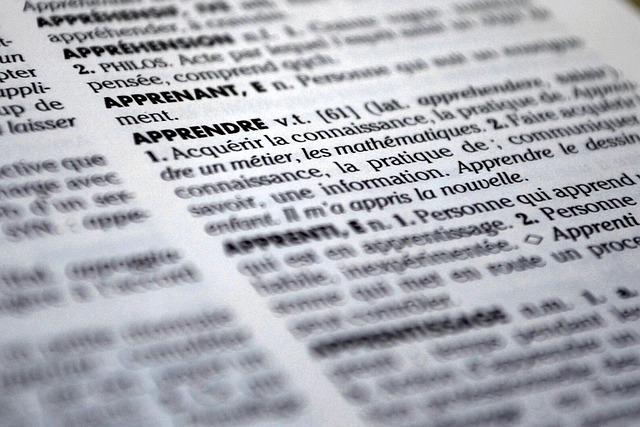- Introduction
- What is Plagiarism?
- Importance of Plagiarism Checkers
- Top Free Plagiarism Checkers
- How to Use Plagiarism Checkers
- Conclusion
- FAQs
Introduction
In the digital age, content creation has surged, giving rise to an increased risk of plagiarism. Writers, educators, and students alike seek effective methods to ensure their work is original. This article serves as a comprehensive guide to understanding plagiarism and the importance of detection tools. We will explore various free online plagiarism checkers available, how to use them effectively, and tips to avoid plagiarism altogether.
The topics covered include a clear definition of plagiarism, the significance of utilizing plagiarism checkers, a detailed list of top free options available, and guidance on how to use these tools efficiently. By the end of this article, readers will be equipped with knowledge to navigate the world of content creation with integrity.
What is Plagiarism?
Plagiarism is the act of using someone else's work or ideas without proper attribution, presenting them as your own. It can take many forms, whether intentional or unintentional, including copying text, paraphrasing without credit, or reusing one’s previous work without acknowledgment. Understanding what constitutes plagiarism is critical for all writers, researchers, and students.
Additionally, schools, universities, and businesses have stringent policies against plagiarism, which can lead to severe consequences such as disciplinary actions or loss of credibility. Therefore, it is essential to be aware of how to create original content and the steps to verify its authenticity.
The following types of plagiarism can occur:
- Direct Plagiarism: Copying someone else’s work word-for-word.
- Self-Plagiarism: Reusing one's previously submitted work.
- Patchwork Plagiarism: Combining phrases or ideas from different sources without citation.
- Accidental Plagiarism: Unintentionally failing to cite sources correctly.
Recognizing these types helps writers make conscious decisions to avoid them, ensuring the integrity of their work and their respect within academic and professional fields.

(Image: Pixabay/@sauvageauch0)
Importance of Plagiarism Checkers
Plagiarism checkers have become invaluable tools in a writer’s toolkit. By providing a mechanism to identify copied content, these tools help maintain the originality and credibility of written material. The combination of algorithmic analysis and extensive databases allows plagiarism checkers to highlight matching text across innumerable sources on the web.
We live in a highly connected world where information flows freely. Consequently, the risk of inadvertently borrowing words or ideas from existing works increases significantly. Plagiarism checkers allow individuals to verify their content’s uniqueness before publication, thus promoting ethical writing practices.
Here are some major reasons why plagiarism checkers are vital:
- Prevention of Academic Misconduct: Educators can easily ensure that students submit original work, fostering a culture of honesty.
- Content Quality: Businesses and bloggers can maintain high-quality content, boosting their reputation.
- Time Efficiency: Instant checks save time spent in manual reviews for original work.
- Learning Tool: Writers can learn from their mistakes as these tools often provide feedback and suggestions.
Checking one’s content not only safeguards against plagiarism but also enhances the writer's skill in creating original work. Importantly, adopting the habit of running a quick check before submission or publication should become standard practice for all writers.

(Image: Pixabay/@OpenClipart-Vectors)
Top Free Plagiarism Checkers
As the demand for plagiarism detection tools rises, numerous free online options have emerged. Each plagiarism checker operates differently based on algorithms, database size, and additional features. Here’s a list of some of the top free plagiarism checkers that can help you ensure the originality of your work:
1. Grammarly
While primarily known for grammar and spell checking, Grammarly offers a robust plagiarism checker as part of its premium subscription. However, the free version provides some level of detection to help you identify potential issues.
2. Quetext
Quetext offers a user-friendly interface and excellent results for detecting plagiarism. Its DeepSearch feature increases accuracy by checking against numerous sources, making it a top choice among students and professionals alike.
3. DupliChecker
This easy-to-use tool allows users to check for plagiarism without signing up. Simply paste the text into the provided box, and Duplichecker will highlight matches and provide a percentage of originality.
4. PaperRater
With both grammar checking and plagiarism detection, PaperRater presents a unique value proposition. Its comprehensive reports include advice on structure and readability alongside originality checks.
5. Small SEO Tools
This free plagiarism checker is tailored for SEO purposes, allowing users to analyze their content for originality while also optimizing it for search engines. It is commonly used by bloggers and marketers to ensure high-quality content.
Each of these tools has distinct features that cater to different user needs, whether you are a student submitting an essay or a professional writer crafting unique content. Experimenting with the various tools can help identify which one best suits your requirements.

(Image: Pixabay/@Clker-Free-Vector-Images)
How to Use Plagiarism Checkers
Understanding how to effectively utilize plagiarism checkers is essential for maximizing their benefits. Here’s a step-by-step guide to help you through the process:
Step 1: Select Your Tool
Begin by choosing one of the free plagiarism checkers mentioned previously. Understand the specific features and limitations of the chosen tool to optimize its use.
Step 2: Prepare Your Text
Before checking, ensure that your text is coherent and complete to get accurate results. If possible, format your document neatly so the software can process it with minimal errors.
Step 3: Input Your Work
Copy and paste your text into the designated area of the plagiarism checker. Some tools also allow you to upload documents directly for verification. Follow the prompts to proceed with the check.
Step 4: Analyze the Results
Once the check is complete, you will receive a report highlighting any matching sections found in the database. Review these matches to determine whether they need to be modified or properly cited in your work.
Step 5: Make Necessary Adjustments
Take action based on the results provided by the plagiarism checker. Whether it involves rephrasing identified sections, adding citations, or enhancing the original content, ensure that your document remains unique before final submission.
By following these steps, you enhance the likelihood of maintaining credible, original content that accurately reflects your voice and ideas. Continuous practice using these tools will refine your writing skills and awareness of plagiarism.

(Image: Pixabay/@Clker-Free-Vector-Images)
Conclusion
Plagiarism is a significant issue in today’s fast-paced content-driven world. Understanding what constitutes plagiarism and using plagiarism checkers plays a crucial role in preserving the integrity of your work. With the many free tools available, writers no longer have to fear accidentally producing counterfeit content.
By incorporating these detection tools into your writing process, you can cultivate skills in creating original material while respecting the work of others. As the saying goes, "Integrity is doing the right thing, even when no one is watching." Let this guide empower you to uphold the highest standards in your writing endeavors.
FAQs
What is a plagiarism checker?
A plagiarism checker is a software tool that scans text for similarities with existing content, ensuring the originality of the material submitted.
Are free plagiarism checkers reliable?
While many free plagiarism checkers provide decent results, they may not be as thorough as premium options. It's advisable to use multiple tools for the best outcomes.
How often should I use a plagiarism checker?
It’s beneficial to check your work for plagiarism each time you finish a draft or significant edits, especially when preparing for submission or publication.
Can plagiarism happen unintentionally?
Yes, accidental plagiarism can occur when writers fail to cite sources properly. Being diligent in citing references can help avoid this issue.
What should I do if my content shows plagiarism?
If plagiarism is detected, review the highlighted sections and either rewrite them in your own words, add appropriate citations or consult your source notes to clarify any misunderstandings.
